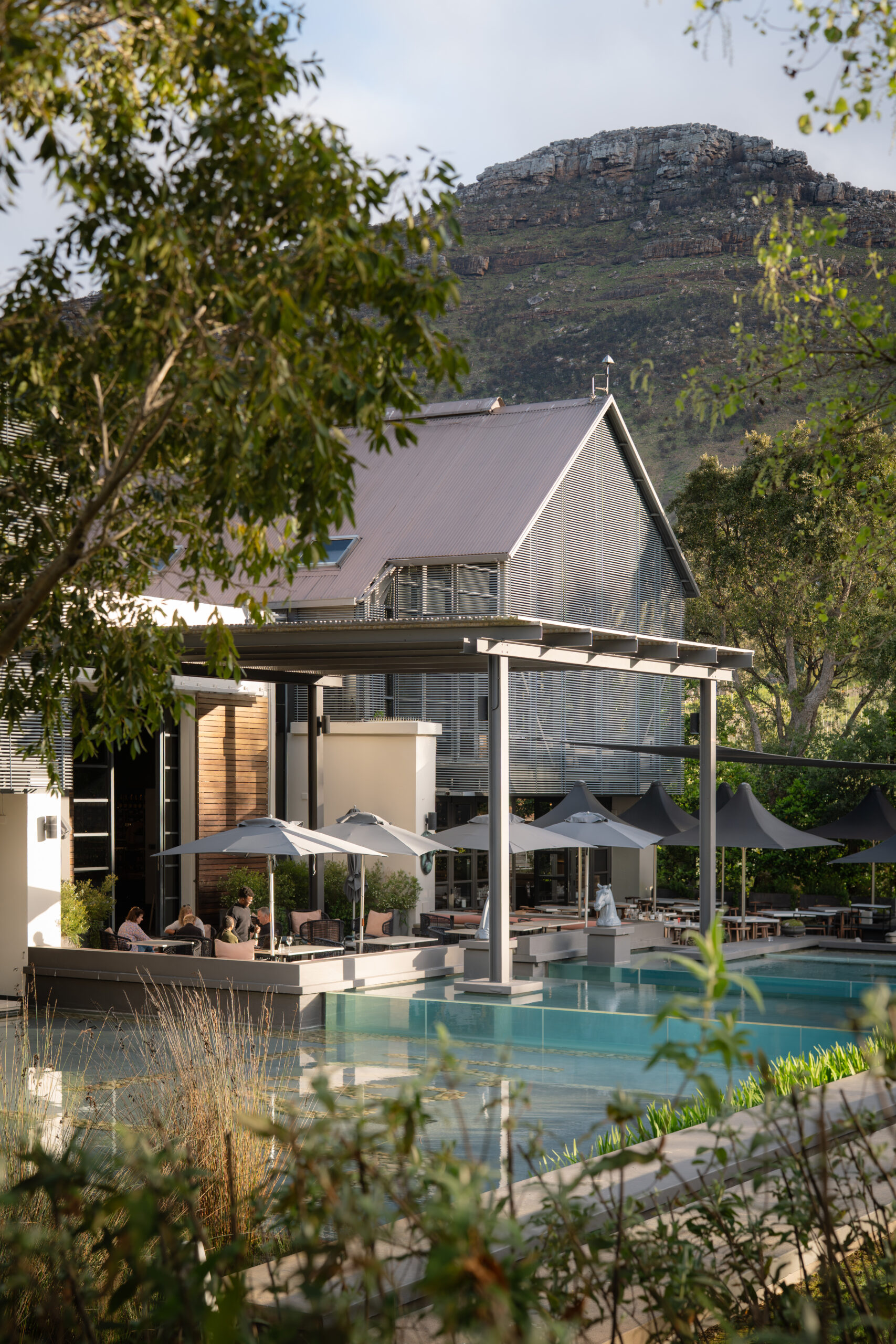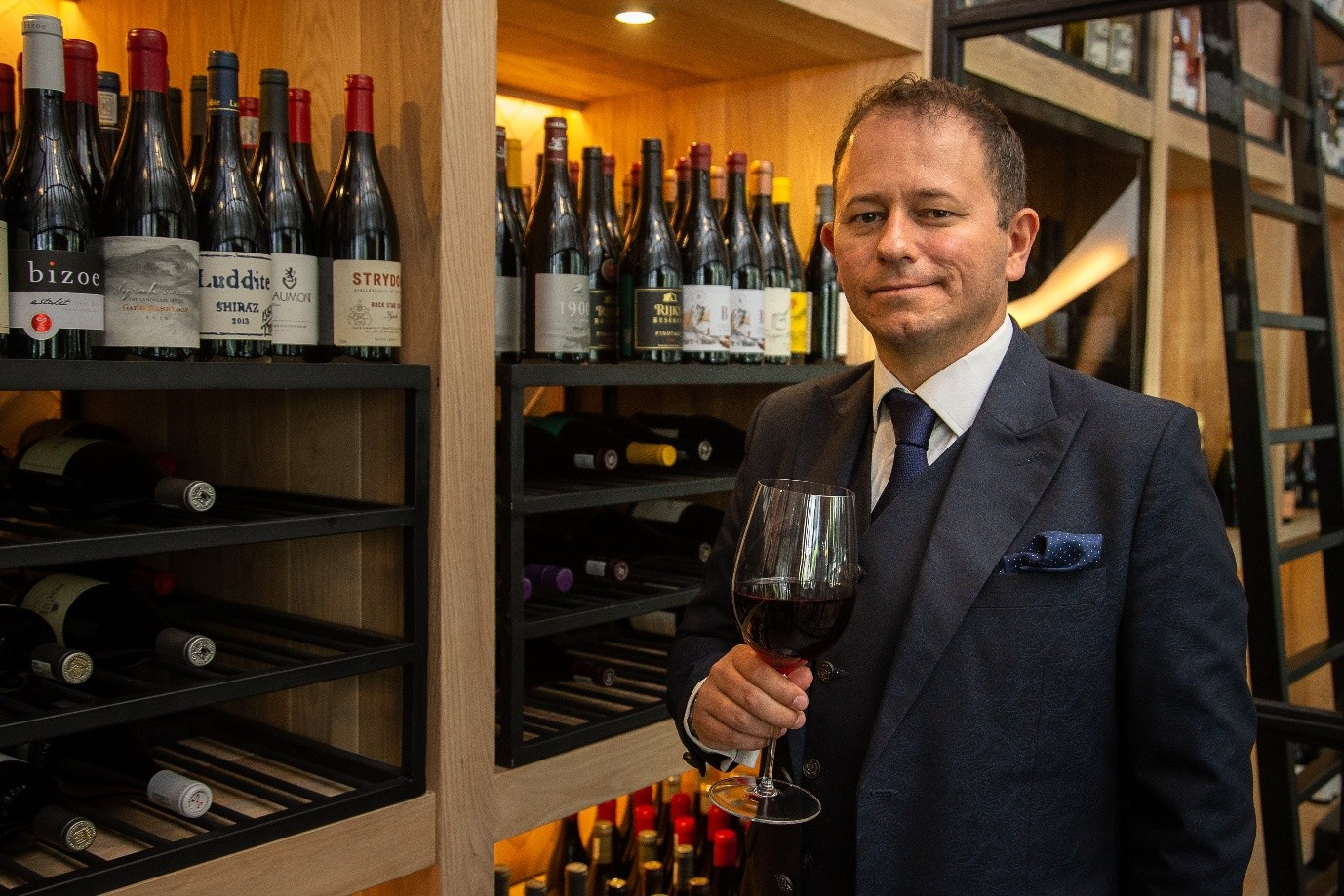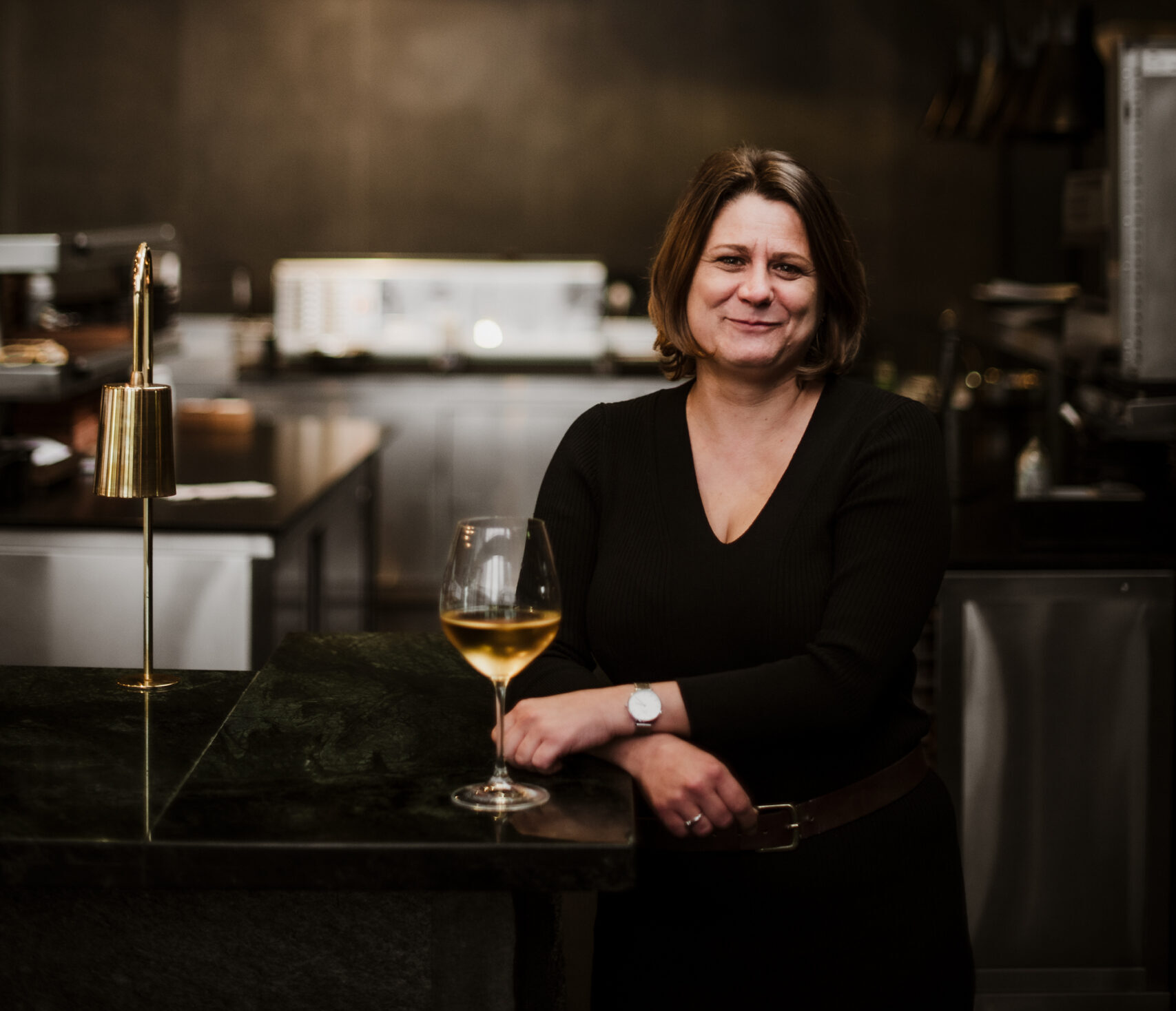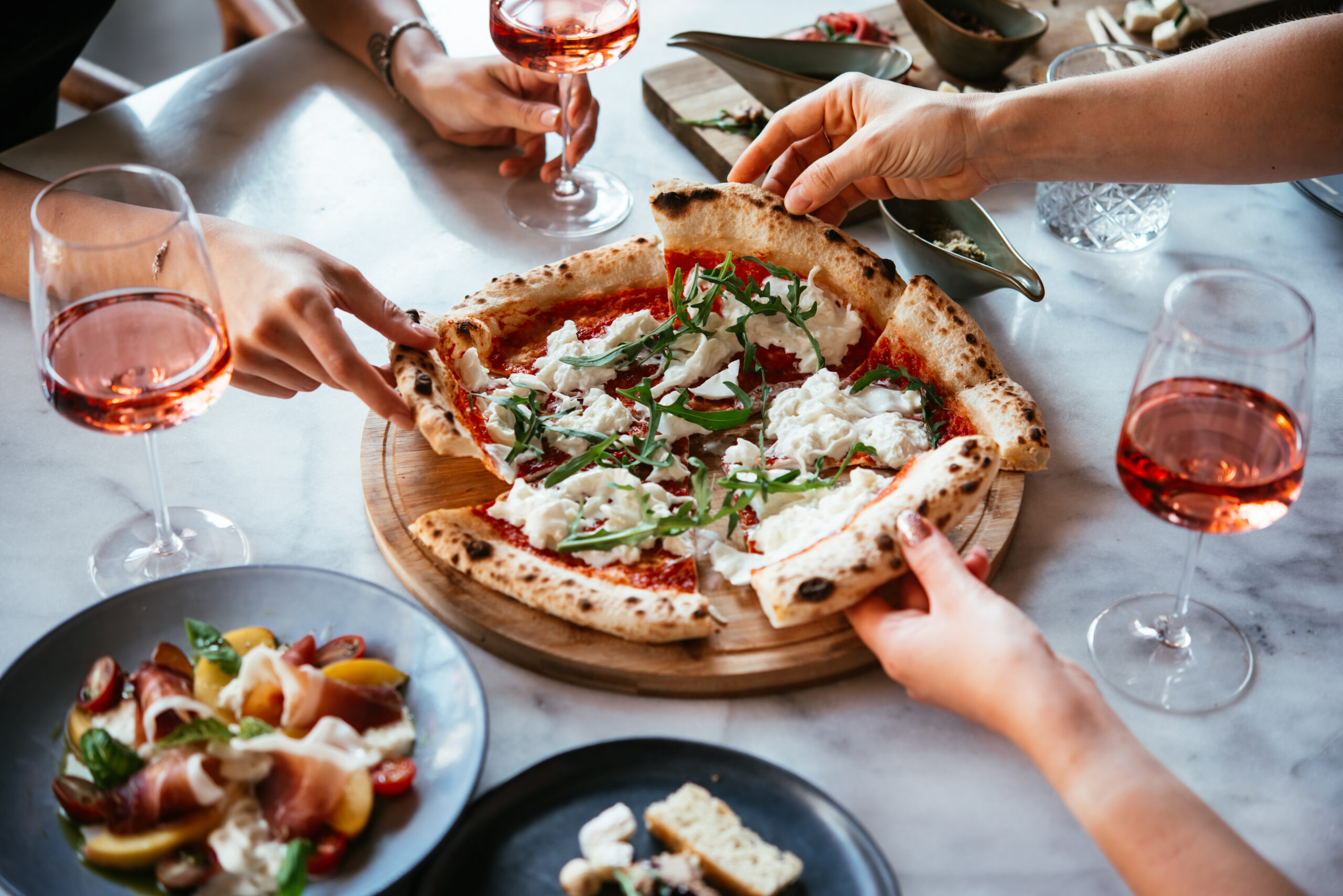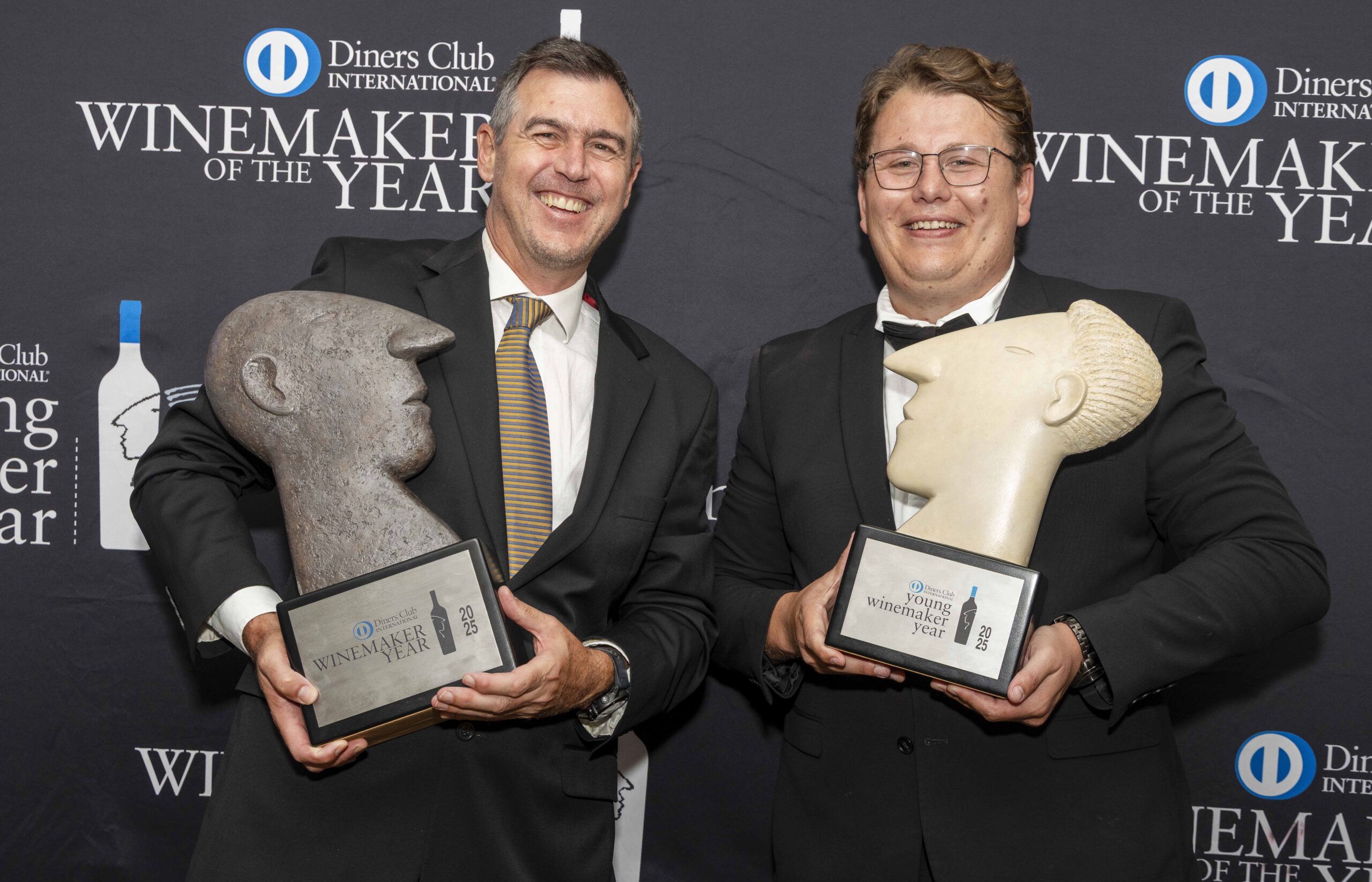Design leaders like Dezeen and Hospitality Design note that in 2025, restaurant success hinges as much on architecture and atmosphere as on food. Diners want spaces that connect to place through natural materials, light, flow, and local context. In South Africa, this trend is thriving, with restaurants drawing deeply on landscape, heritage, and identity.
At Steenberg in Constantia, Executive Chef Kerry Kilpin has seen this shift firsthand. “Guests want more than a meal. They want authentic, visually striking spaces. A strong sense of place makes the experience memorable,” she says.
Both Tryn and Bistro Sixteen82 embody Constantia’s unique sense of place. Bistro Sixteen82 reflects modern architecture and open flow. A 2015 redesign reimagined the restaurant’s flow: the bar was relocated to boost capacity and the kitchen expanded for efficiency. In 2022, the colour palette changed, acoustics softened with high-backed banquettes, paired with handmade crocheted lampshades that bring intimacy and texture. A palette of beige, olive, and warm leather replaced the old creams, adding relaxed luxury. Even the bathrooms were refreshed, ensuring the design language runs seamlessly throughout.
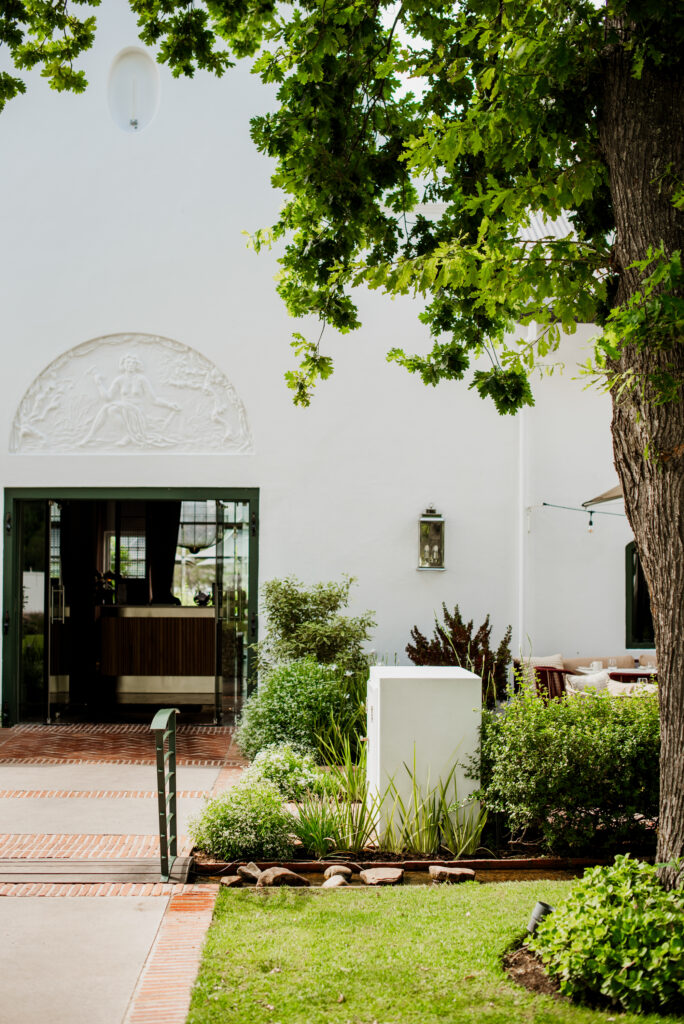
Tryn, meanwhile, blends heritage with modern elegance, framed by mountain views and ancient oaks. At its heart is a striking central bar with mosaic tiling echoing the dining rooms’ palettes: ruby red and emerald greens from the private dining areas and burnt oranges from the main dining area. Bold, textured interiors showcase commissioned works by young South African artists. Revamped patios extend the flow outdoors, carrying the interiors’ rich tones into the garden. “Natural light makes the space feel alive,” says Kilpin. “It lifts the mood, enhances the food, and ties every meal to the vineyard setting.”
Light and landscape set the scene, but architectural flow shapes the experience. Kilpin explains, “When spaces connect naturally, light, art, and views guide guests, making them feel relaxed. Flow enhances the atmosphere in subtle, often unnoticed ways.”
This resonates with Peter Tempelhoff, Chef Founder of FYN Restaurant, who sees flow as setting the stage long before a dish arrives. “Architecture sets the tone before a guest ever takes a bite. Guests don’t arrive by tasting the food, they arrive ‘into’ a space, and that space dictates their comfort and expectations,” he says.
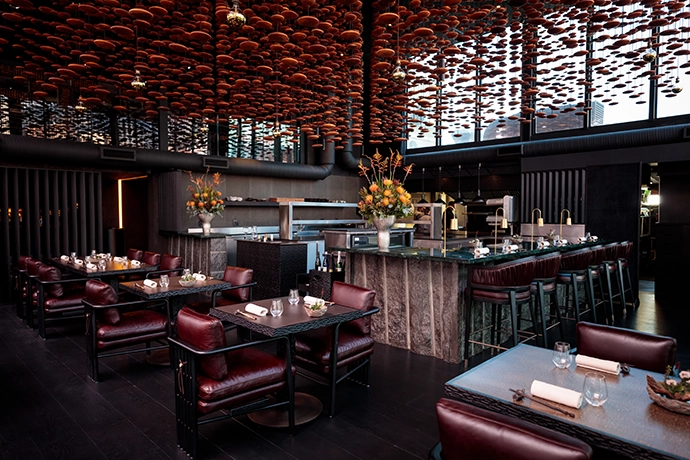
“Flow, proportion, and atmosphere frame the entire meal. At FYN, we’ve even custom-designed tables with extensions to streamline table-side service and optimise space, a detail where architecture, design, and service are inseparably linked.”
In the Instagram era, design is as shareable as the food. Kilpin says, “Guests want every detail, from space and table setting to lighting and glassware, to be ‘Instagramable’. These details make the moment memorable and worth sharing, and they tell the restaurant’s story just as much as the food does.”
Paul Hetreed, founder of Kloof Street House, echoes the importance of detail. Housed in a magnificent twentieth-century Victorian home, Kloof Street House is a visual feast of chandeliers, chesterfield couches, eclectic art, and fairy-lit gardens.
“Flow should be seamless, where very corner of the restaurant invites you into a fantasy, designed to evoke deep feeling and linger in the memory.” says Hetreed. “When romance, music, and a timeless elegance come together, the result is a sensory experience that influences mood and identity. That’s what makes it both memorable and shareable.”
If a dish satisfies, design makes it memorable. Kilpin says, “Design shapes how guests feel be it comfort, excitement, nostalgia or beauty. Those feelings linger, are shared, and that memory becomes part of their story.”
Tempelhoff agrees, “The details, be it the exact dish or wine pairing, quickly fade. But the emotional impression lasts for years. Design is central to creating that connection.”
So, where is restaurant design heading? For Kilpin, simplicity and memorability are key. “Restaurant design is ever evolving and becoming increasingly memorable. With thoughtful touches, spaces create experiences that go far beyond the meal itself. Even the simplest designs can leave a lasting impression, proving that less is more.”
Tempelhoff predicts a stronger move toward authenticity. “The future lies in design that is unmistakably local yet world-class and a reflection of who we are, expressed through architecture, interiors, and atmosphere as much as through food.”
In 2025, the most successful restaurants are not those chasing trends but those grounding themselves in authenticity, creating light-filled spaces that embrace the land and tell a local story. As Kilpin reflects, “It’s not only about the dish, but the entire space that tells the restaurant’s story. When design and food work together, the experience becomes unforgettable.”


